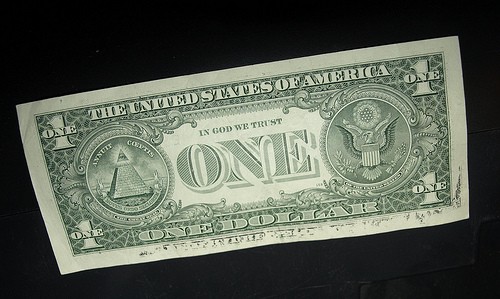Will Your MoneyMarket Fund Break the Buck
Post on: 16 Март, 2015 No Comment

By Tim Paradis
Associated Press
Sunday, November 18, 2007
NEW YORK — One of the safest and, lately, most attractive places for people to park some of their savings — the money-market account — is suddenly looking a little less secure thanks to fallout out from the mortgage mess.
Bank of America became the latest financial company to announce plans to shore up a group of money-market funds, in its case with a $600 million reserve. Its move last week raises questions about whether this category of savings might suffer hits that are serious enough to cause losses for investors.
The notion that some money-market funds might give investors less than a dollar-for-dollar return on their investment, an occurrence known as breaking the buck, is a sobering thought. Some experts say it remains unlikely, however.
The Bank of America funds have run into trouble with a type of investment known as a structured investment vehicle, or SIV, which uses borrowed money to invest in perhaps risky but high-yielding investments. These often complex transactions have operated, and made money, on a basic principle: that borrowing was easy and cheap.
When the market for risky mortgages collapsed earlier this year, credit in general got squeezed, and SIVs have suffered badly. Still, Peter Crane, president of Crane Data, which tracks money-market mutual funds, says he doesn’t think this will hurt the average money-market client. The banks that use SIVs are big institutions with too much at stake to let this extremely popular type of investment go sour. Money-market funds now total about $3 trillion.
It’s extremely unlikely that investors would be impacted, Crane said.
Last week, Legg Mason said in a filing with regulators that it established lines of credit totaling about $238 million to preserve the credit ratings of two funds run by one of its divisions.
Bruce Bent, who invented the money-market fund in 1970, agreed with Crane that these measures appear precautionary. I do not think they’re going to break the buck, and I also question whether they will need to step in at all, he said.
His firm, the Reserve, has about $83 billion in assets. He said it does not hold investments in SIVs.
Unlike savings accounts or government bonds, money-market funds are not insured. However, they operate under rules that require the money to be invested somewhat conservatively.
Crane said that in what he considered to be the unlikely event a money-market fund failed, savers still will get your money back — the risk is you will have to wait. That could happen if there was a run by investors on a fund, he said.
It has only occurred once that a money-market fund has failed: the Community Bankers Mutual Fund in 1994. In that case, investors ultimately lost about 4 cents on the dollar. And the fund was for a group of bankers, not retail investors.
Other times, when a well-regarded company has defaulted on its debt and money funds have gotten into trouble, investors have eventually been paid in full. However, one of the big attractions of a money-market fund is the ability to put money in and take it out whenever you want.
Bent said that, as banks are disclosing more of their troubles, investors should ultimately be reassured. With the worst damage evident, credit markets are able to loosen up and allow for easier borrowing and investing.
Things are improving, he said. The whole thing is a big psychological game. Is this over? No, but we’re better off than we were yesterday.














